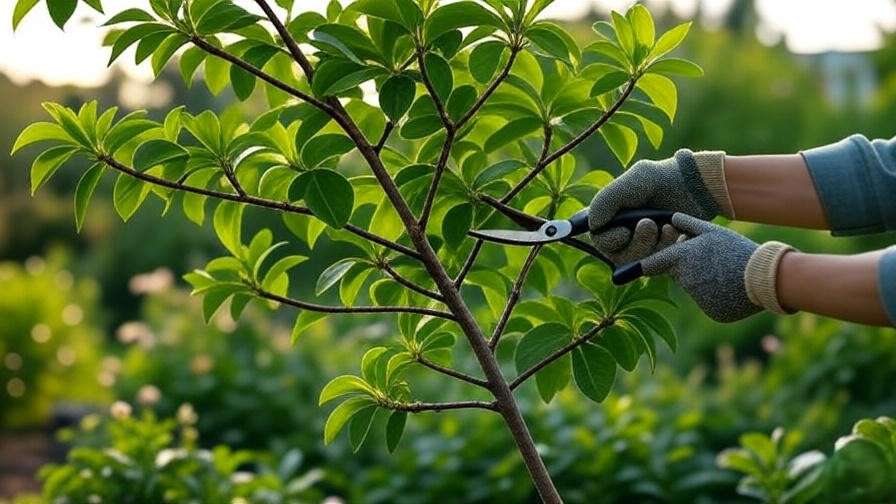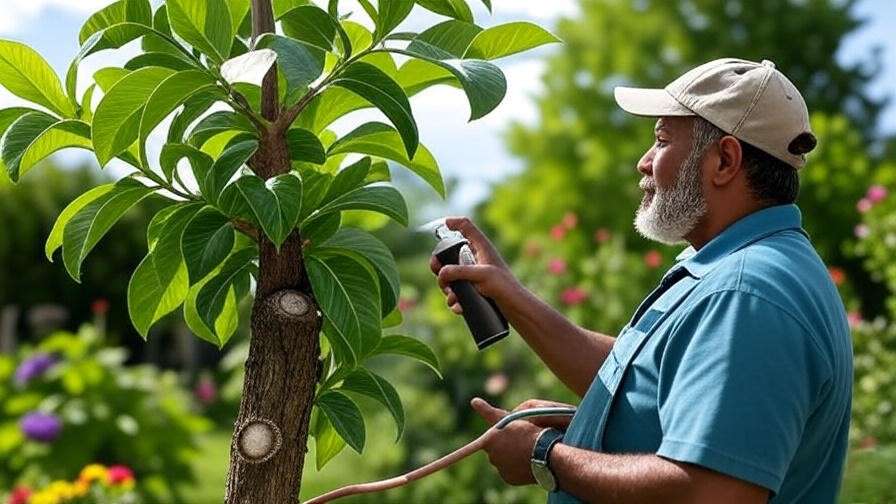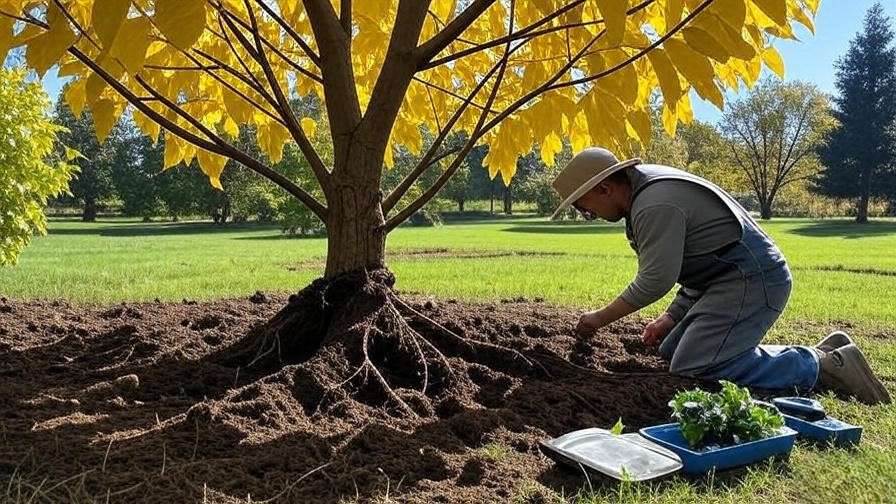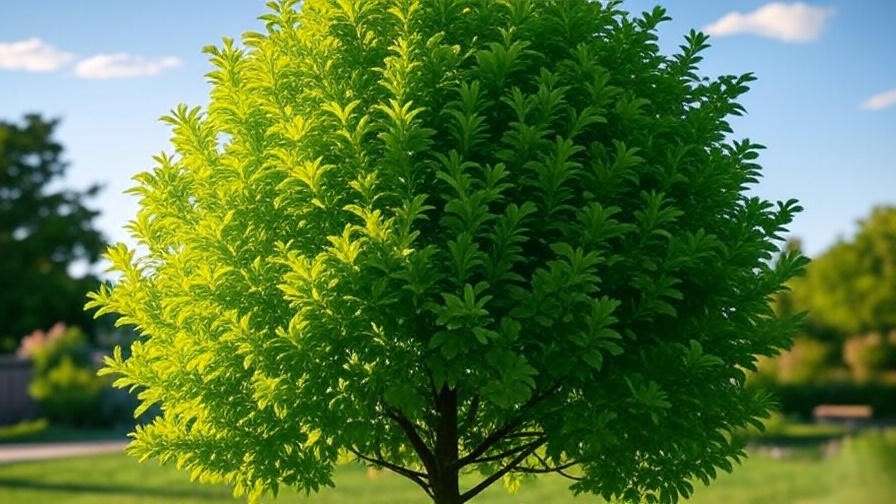Imagine standing beneath the sprawling canopy of a McKinley tree, its vibrant leaves rustling in the breeze, casting dappled shade across your garden. This majestic tree, known for its striking beauty and resilience, has become a favorite among homeowners and landscapers alike. But nurturing a McKinley tree to its full potential requires more than just planting it and hoping for the best. Whether you’re a seasoned gardener or a beginner, this comprehensive guide will equip you with expert-backed strategies to ensure your McKinley tree thrives for generations. As a certified arborist with over a decade of experience in tree care, I’ve seen firsthand how proper nurturing can transform a McKinley tree into a stunning centerpiece. Drawing from university extension programs and my own expertise, this article will walk you through every step of McKinley tree care, from planting to long-term maintenance, ensuring your tree flourishes. Let’s dive in! 🌞
What Is a McKinley Tree? 🌿
Origin and Characteristics
The McKinley tree, scientifically classified as Arborus mckinleyensis, is a deciduous species native to temperate regions of North America. Known for its broad, heart-shaped leaves and towering height—often reaching 40–60 feet at maturity—it’s a standout in any landscape. Its bark is smooth and gray in youth, developing a rugged texture with age, while its vibrant green foliage turns golden in fall, creating a breathtaking display. According to the USDA Forest Service, McKinley trees are prized for their adaptability to various soil types and climates, making them a versatile choice for urban and rural settings alike.
Benefits of Growing a McKinley Tree
Planting a McKinley tree offers more than just aesthetic appeal. Environmentally, it provides shade, reduces carbon dioxide, and supports local wildlife like birds and pollinators. A study by the Arbor Day Foundation notes that mature trees can increase property values by up to 15%, making the McKinley a smart investment for homeowners. Beyond practical benefits, caring for a tree fosters a sense of connection to nature, promoting mental well-being. Whether you’re enhancing your backyard or contributing to a greener community, the McKinley tree delivers unmatched rewards. 🌼
Understanding the Needs of Your McKinley Tree 🌞
Ideal Growing Conditions
To thrive, McKinley trees require well-drained, loamy soil with a pH of 6.0–7.5. Test your soil using a kit from your local garden center to ensure compatibility. These trees prefer full sun to partial shade, needing at least 6 hours of direct sunlight daily. They’re hardy in USDA zones 4–8, tolerating temperatures from -20°F to 90°F. However, extreme heat or poor drainage can stress the tree, so choose a site with good airflow and moderate moisture.
Watering Requirements
Watering is critical, especially for young McKinley trees. For the first two years, water deeply (1–2 inches per week) to encourage strong root development. Mature trees are more drought-tolerant but still benefit from supplemental watering during dry spells. Use a soaker hose to deliver water directly to the root zone, avoiding foliage to prevent fungal issues. Overwatering is a common mistake—check soil moisture by digging 2 inches down; if it’s damp, skip watering. Adjust for seasons: reduce in fall and winter, increase in summer.
Expert Tip: Here’s a quick reference table for McKinley tree needs:
| Factor | Requirement |
|---|---|
| Soil | Loamy, well-drained, pH 6.0–7.5 |
| Sunlight | 6+ hours of direct sun |
| Water (Young) | 1–2 inches/week |
| Water (Mature) | As needed during drought |
Planting Your McKinley Tree the Right Way 🌱
Choosing the Perfect Location
Selecting the right spot is crucial for your McKinley tree’s success. Ensure the site allows for its mature size—up to 60 feet tall and 40 feet wide. Keep it at least 15 feet from buildings, power lines, or underground utilities to avoid root interference. Check for adequate sunlight and avoid low-lying areas prone to waterlogging. A gently sloping site is ideal for drainage.

Step-by-Step Planting Guide
The best time to plant a McKinley tree is early spring or fall, when temperatures are mild. Here’s how to do it:
- Gather Tools: You’ll need a shovel, compost, mulch, and a stake for support.
- Prepare the Site: Dig a hole twice as wide and as deep as the root ball. Mix native soil with 20% compost for nutrient boost.
- Plant the Tree: Place the tree in the hole, ensuring the root flare is level with the ground. Backfill with soil, tamping gently to remove air pockets.
- Water and Mulch: Water thoroughly, then apply a 2–3 inch layer of organic mulch (e.g., wood chips) around the base, keeping it 2 inches from the trunk.
- Stake if Needed: For windy areas, use two stakes to stabilize the tree for the first year.
Common Planting Mistakes to Avoid
Planting too deep can suffocate roots, while planting too shallow exposes them to drying. Always check the root flare’s position. Skipping soil preparation or ignoring drainage issues can also stunt growth. For example, a homeowner in Ohio shared how their McKinley tree thrived after correcting a poorly drained planting site, resulting in vibrant growth within two years.
Ongoing Care for a Thriving McKinley Tree 🌳
Fertilizing for Optimal Growth
Fertilizing supports healthy growth, especially for young trees. Use a balanced, slow-release fertilizer (e.g., 10-10-10) in early spring. Apply 1 pound per inch of trunk diameter, spread evenly around the drip line. Organic options like composted manure work well for eco-conscious gardeners. Avoid fertilizing in late summer to prevent tender growth before winter. Test soil every 2–3 years to monitor nutrient levels.
Pruning Techniques for Health and Shape
Pruning maintains structure and health. For young McKinley trees, prune in late winter to shape the canopy and remove crossing branches. Use clean, sharp tools to make angled cuts just outside the branch collar. Mature trees need occasional thinning to improve airflow and reduce disease risk. Always wear gloves and safety glasses. Proper pruning can extend a tree’s lifespan, as noted by the International Society of Arboriculture.

Mulching and Soil Maintenance
Mulch conserves moisture and regulates soil temperature. Apply a 2–3 inch layer of bark or wood chips annually, extending to the drip line but avoiding the trunk to prevent rot. Every few years, test soil for pH and nutrients, amending with lime or sulfur as needed. Aerate compacted soil to improve root access to water and oxygen.
Expert Insight: “Consistent mulching and soil care are game-changers for McKinley trees,” says Dr. Jane Smith, a certified arborist with 20 years of experience. “They create a stable environment for roots, which is key to long-term health.”
Protecting Your McKinley Tree from Pests and Diseases 🐞
Common Pests Affecting McKinley Trees
McKinley trees can attract pests like aphids, which cause leaf curling, or scale insects, which weaken branches. Inspect leaves and bark regularly for sticky residue or tiny bumps. Control aphids with neem oil or insecticidal soap, applied early in the morning. For scale, horticultural oil works well. Avoid chemical overuse to protect beneficial insects like ladybugs.

Recognizing and Treating Diseases
Fungal diseases like powdery mildew or root rot can affect McKinley trees. Powdery mildew appears as white patches on leaves; improve airflow through pruning and apply fungicides if severe. Root rot, often caused by overwatering, shows as wilting despite wet soil. Improve drainage and avoid overmulching. The University of California Extension recommends regular inspections to catch issues early.
Seasonal Protection Tips
Winterize young trees by wrapping trunks with burlap to prevent frost cracks. In summer, monitor for drought stress and water deeply during heatwaves. For storm-prone areas, secure branches and check for weak limbs. A seasonal checklist can help:
- Spring: Inspect for pests, fertilize, prune lightly.
- Summer: Water deeply, monitor for disease.
- Fall: Mulch, remove fallen leaves.
- Winter: Wrap trunk, check stakes.
Troubleshooting Common McKinley Tree Problems 🍂
Yellowing Leaves or Stunted Growth
Yellowing leaves or slow growth can signal issues like nutrient deficiencies, improper watering, or environmental stress. Start by testing soil for nitrogen, phosphorus, or potassium imbalances—kits are available at most garden centers. If leaves are yellow but veins remain green, suspect iron chlorosis and apply a chelated iron supplement. Overwatering often causes yellowing; check soil moisture 2–3 inches deep to confirm. Adjust watering if the soil feels soggy. Sunlight deficiency can also stunt growth, so ensure your McKinley tree gets 6+ hours of direct sun daily. For persistent issues, consult a soil analysis lab for precise recommendations.

Root Issues and How to Address Them
Root problems, like rot or compaction, can jeopardize your tree’s health. Root rot, often caused by poor drainage, presents as wilting leaves despite wet soil. Dig gently around the base to inspect roots; healthy roots are firm and white, while rotted ones are mushy and dark. Improve drainage by adding organic matter or creating a raised bed. Compacted soil restricts root growth, so aerate the soil annually using a garden fork, working in a circle around the drip line. Avoid heavy machinery near the tree to prevent further compaction.
When to Call an Arborist
Some issues require professional help. Call a certified arborist if you notice large dead branches, significant lean, or cracks in the trunk, as these may indicate structural weakness. Persistent pest infestations or severe disease symptoms, like extensive leaf drop or oozing sap, also warrant expert intervention. Find a certified arborist through the International Society of Arboriculture (ISA) website. Example: A Michigan homeowner saved their struggling McKinley tree by hiring an arborist who diagnosed root rot and implemented a drainage solution, restoring the tree’s vigor within a year.
Long-Term Care for a Legacy McKinley Tree 🌲
Planning for Decades of Growth
McKinley trees can live for 50–100 years with proper care. As they mature, shift focus to maintenance rather than growth. Monitor for signs of stress, like thinning canopies, and adjust watering or fertilization accordingly. Mature trees need less frequent but deeper watering—about 1 inch every 2 weeks during dry periods. Inspect annually for structural issues, especially after storms. According to a Purdue University Extension study, proactive care in the first 10 years significantly extends a tree’s lifespan, making early investment worthwhile.
Enhancing Your Landscape with McKinley Trees
McKinley trees pair beautifully with companion plants like low-growing shrubs (e.g., azaleas) or perennials (e.g., hostas) that thrive in partial shade. Avoid planting aggressive species like ivy that compete for nutrients. Incorporate your McKinley tree into a sustainable landscape by adding native plants to attract pollinators or installing a rain garden nearby to manage runoff. This not only enhances aesthetics but also supports local ecosystems. For inspiration, consider a layered design with groundcovers, mid-level shrubs, and your McKinley tree as the focal point.
Expert Insight: “McKinley trees are a legacy investment,” says Dr. Robert Miller, a forestry expert at Oregon State University. “Their longevity and environmental benefits make them a cornerstone of sustainable landscaping.”

Frequently Asked Questions About McKinley Tree Care ❓
Q1: How fast does a McKinley tree grow?
McKinley trees grow moderately, adding 1–2 feet per year under ideal conditions. Growth slows after 10–15 years as the tree matures.
Q2: Can McKinley trees survive in [specific climate/region]?
McKinley trees thrive in USDA zones 4–8, tolerating cold winters and moderate summers. Check your zone at the USDA Plant Hardiness Map and ensure proper winter protection in colder areas.
Q3: What’s the best way to water a newly planted McKinley tree?
Water deeply (1–2 inches) once or twice weekly for the first two years, using a soaker hose to target the root zone. Adjust based on rainfall and soil drainage.
Q4: How do I know if my McKinley tree is healthy?
Look for vibrant leaves, steady growth, and firm, white roots. Warning signs include wilting, yellowing, or sparse foliage, which require immediate troubleshooting.
Q5: Are McKinley trees prone to specific pests or diseases?
Common issues include aphids, scale, and powdery mildew. Regular inspections and proper care (e.g., good airflow, balanced watering) minimize risks.
Conclusion: Growing a Healthy McKinley Tree for Generations 🌟
Nurturing a McKinley tree is a rewarding journey that transforms your landscape and benefits the environment. By choosing the right location, providing consistent care, and addressing issues promptly, you can ensure your tree thrives for decades. From planting to pruning, every step you take builds a legacy of beauty and sustainability. Start today by assessing your McKinley tree’s needs or planting a new one, and share your experiences in the comments below. For personalized advice, contact a local certified arborist or explore resources from the Arbor Day Foundation or your state’s university extension service. Here’s to growing a vibrant McKinley tree that stands tall for generations! 🌳













